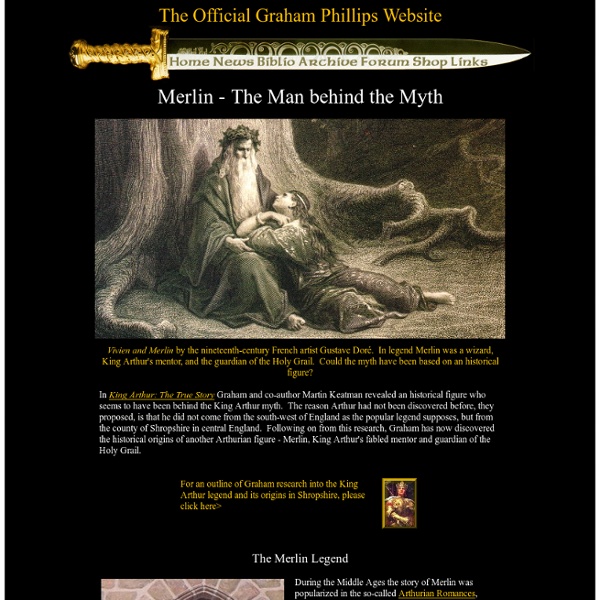The Historical Merlin
Illustration of Merlin from Tennyson's Idylls of the King, 1898. In legend Merlin was not only depicted as a wizard but also a bard - a poet and writer of songs. In the Dark Ages bards were accredited with the gift of prophecy. The Bodleian Library, Oxford, where The Red Book of Hergest is now preserved. Ambrosius Aurelius does have many things in common with the Merlin of later romance. Like Merlin, he united Britain in the period after Vortigern's reign: both Gildas and Bede say that he successfully halted the invasion of Britain in the last few decades of the fifth century. Surviving writings concerning Britain in the Dark Ages are found mainly in Welsh manuscripts and in the Welsh language.
Alternative Sleep Cycles
Most people only think that there is one way to sleep: Go to sleep at night for 6-8 hours, wake up in the morning, stay awake for 16-18 hours and then repeat. Actually, that is called a monophasic sleep cycle, which is only 1 of 5 major sleep cycles that have been used successfully throughout history. The other 4 are considered polyphasic sleep cycles due to the multiple number of naps they require each day. How is this possible? How is this healthy? Well the most important of every sleep cycle is the Stage 4 REM (Rapid Eye Movement) sleep, which has been shown to provide the benefits of sleep to the brain above all other stages of sleep. This way, you still get the benefits of 8 hours of sleep without wasting all of the time it takes to get to REM cycles, resulting in a much more efficient sleep cycle. Uberman Cycle: 20 to 30 minute naps every 4 hours, resulting in 6 naps each day. Everyman Cycle: One longer “core” nap that is supplemented with several 20-30 minute naps. Dymaxion Cycle:
Handbook for Life: 52 Tips for Happiness and Productivity | zen habits
By Leo Babauta This is something I’ve been wanting to write for some time — a Handbook for Life. Now, is there any handbook that can be a guide to every single person? Of course not. It’ll also become apparent from the links in this handbook that I’ve written about this stuff before. How to use this handbook This handbook is not meant to be a step-by-step guide, nor should you adopt all the tips below. Pick and choose the tips that will be most useful to you. 52 Tips for Happiness and Productivity Try rising early.
Why You’ll Pay for Silence: John Cage’s 4:33
I was on iTunes yesterday checking out Kanye and Jay-Z’s latest when I came across something that caught my eye. It was the famous – or perhaps infamous – John Cage piece Four Minutes and Thirty Three Seconds, one of the must unique and provocative pieces in the history of contemporary music. 4:33 was debuted on August 29th, 1952, by David Tudor at Maverick Concert Hall in Woodstock, New York. Tudor was an established pianist well versed in the experimental music scene. For the next four minutes and thirty-three seconds Tudor sat there, in silence, and nearly motionless. No, he didn’t freeze or choke. Cage replaced the expected with the unexpected; instead of piano sounds, he gave the audience different sounds – but he still gave them music. I first heard about 4:33 from my college music professor, who actually paid money for the sheet music and had us perform it in his intro to music theory class. I had forgotten about 4:33 until I saw it on iTunes yesterday. Maybe. Like this:
test
Related:
Related:



